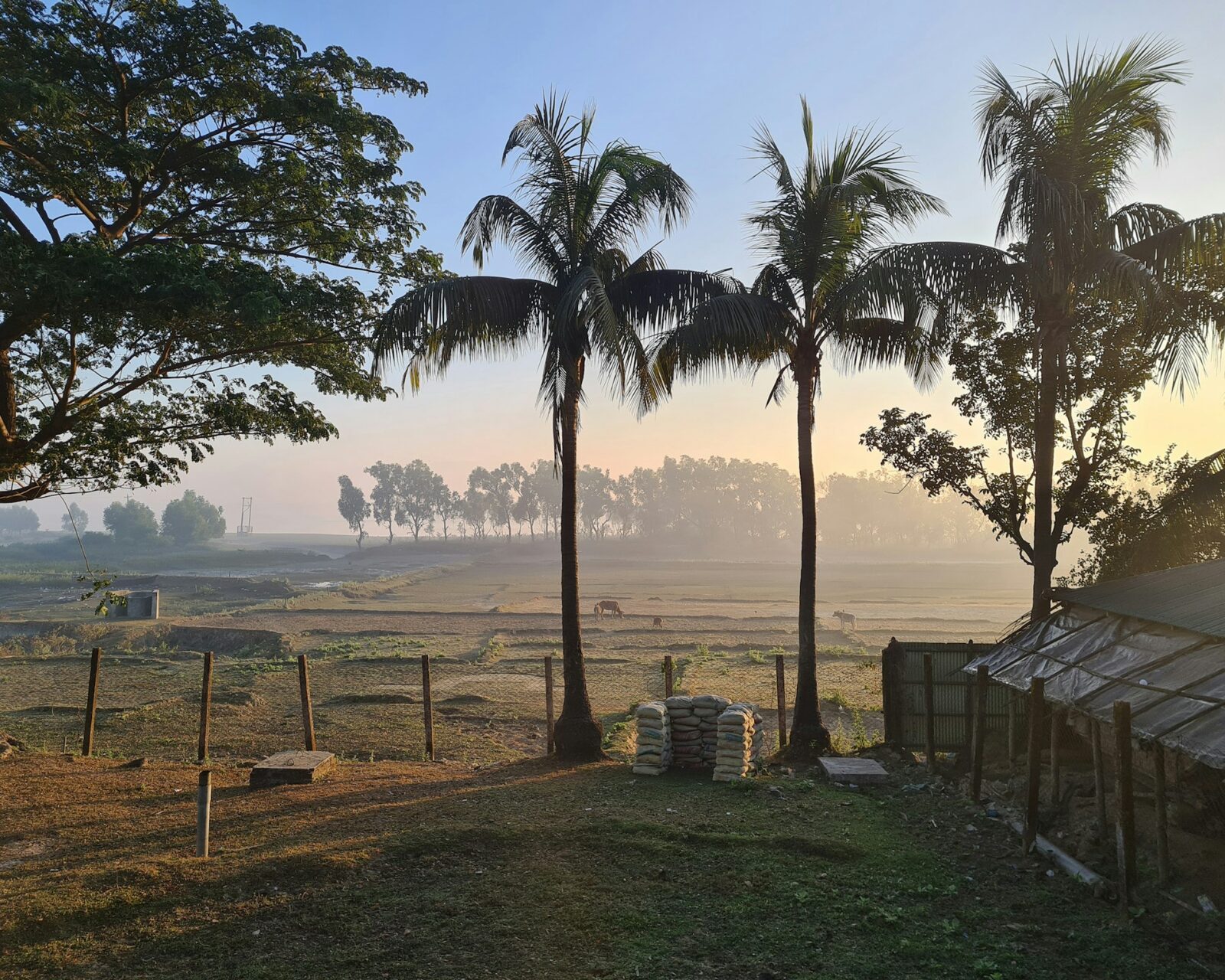Exploring rural India through a homestay offers an authentic, immersive experience, allowing travelers to connect with local culture, savor home-cooked meals, and discover hidden gems far from crowded tourist hubs. From the lush hills of Himachal Pradesh to the vibrant villages of Rajasthan, homestays provide a unique way to experience India’s heartland. This 2000-word guide, crafted for beginners, details how to book a homestay in rural India, including top destinations, booking tips, and practical advice for a memorable stay. Written in simple, easy-to-understand language, this unique, SEO-friendly article naturally incorporates all required keywords across different paragraphs, ensuring a beginner-friendly experience for travelers.
Why Choose a Homestay in Rural India?
Homestays in rural India are more than just a place to sleep—they’re a window into local life. You’ll stay with families, share their traditions, and enjoy personalized hospitality, often in scenic settings like mountains, farms, or deserts. Unlike hotels, homestays support local economies and offer affordable, authentic experiences.
For beginners, homestays are welcoming and flexible, with hosts often guiding you through village life. According to crypings com, homestays in rural India are gaining popularity for their cultural richness and budget-friendly rates, making them ideal for travelers seeking meaningful connections.
Benefits of Rural Homestays
- Cultural Immersion: Participate in local festivals, learn traditional cooking, or join farming activities.
- Authentic Food: Enjoy home-cooked regional dishes, like Rajasthani dal baati or Keralite fish curry.
- Personalized Experience: Hosts tailor your stay, recommending hidden trails or local markets.
- Affordability: Homestays cost $10–$50 USD/night, much less than urban hotels.
Magazineneed com highlights that rural homestays offer a slower pace, perfect for travelers wanting to escape city chaos. Check site:crypings.com for guides on choosing authentic homestays.
Planning Your Homestay Experience
Before booking, consider these key planning tips:
- Best Time to Visit: October to March offers pleasant weather across most rural regions. Monsoons (June–September) are lush but may limit outdoor activities, while summers (April–May) are hot in plains like Rajasthan.
- Duration: A 3–7 day stay allows meaningful engagement with hosts and exploration of nearby attractions. Weekend trips work for shorter visits.
- What to Pack: Light clothing, comfortable shoes, a reusable water bottle, insect repellent, and a small gift for hosts (e.g., chocolates or a souvenir). A camera captures village life beautifully.
Hikkly com provides beginner-friendly advice on planning a rural homestay trip, including packing essentials. Visit site:magazineneed.com for seasonal travel tips.
Steps to Book a Homestay in Rural India
Booking a homestay is straightforward with these steps:
1. Choose Your Destination
Rural India offers diverse homestay regions, each with unique vibes:
- Himachal Pradesh: Villages like Manali or Dharamshala offer mountain views, trekking, and Buddhist culture.
- Rajasthan: Stay in villages near Udaipur or Pushkar for desert charm, forts, and vibrant markets.
- Kerala: Backwater villages like Alleppey provide serene waterways and coconut groves.
- Uttarakhand: Rishikesh or Kumaon villages offer Himalayan hikes and yoga.
- Northeast India: Meghalaya’s Mawlynnong, Asia’s cleanest village, showcases tribal culture.
Jollykangaroos com suggests picking a region based on your interests, like adventure, culture, or relaxation. Check site:hikkly.com for destination guides.
2. Find Reputable Homestays
Use trusted platforms or local networks to find homestays:
- Online Platforms: Websites like Airbnb, Booking.com, or StayVista list verified rural homestays with reviews.
- Specialty Sites: Platforms like Rural Tourism India or Authentic India Stays focus on village homestays.
- Travel Agencies: Local operators in cities like Jaipur or Kochi offer homestay packages.
- Word of Mouth: Ask fellow travelers or check forums for recommendations.
Moxdoc com recommends reading guest reviews to ensure hosts are welcoming and facilities meet your needs. Visit site:jollykangaroos.com for homestay platform comparisons.
3. Contact the Host
Once you find a homestay, reach out directly via email, phone, or platform messaging:
- Ask Questions: Inquire about meals, activities (e.g., village tours), Wi-Fi, or transport to the homestay.
- Discuss Needs: Mention dietary preferences (e.g., vegetarian) or accessibility requirements.
- Confirm Pricing: Ensure costs cover lodging, meals, or extras like guided tours. Prices typically range from $10–$50 USD/night.
Hoodyvan com advises contacting hosts early, especially for peak seasons (October–March), to secure your spot. Check site:moxdoc.com for tips on communicating with hosts.
4. Book and Pay
Most platforms allow online bookings with secure payments. For direct bookings:
- Use Trusted Methods: Pay via bank transfer, UPI (e.g., Google Pay in India), or platforms like PayPal, avoiding cash upfront.
- Get Confirmation: Request a written booking confirmation with dates, costs, and inclusions.
- Check Cancellation Policies: Rural homestays may have strict policies, so clarify refund options.
Prvelocitystream com suggests booking 1–2 months in advance for popular regions like Kerala or Himachal. Visit site:hoodyvan.com for secure payment guides.
5. Arrange Transport
Rural homestays are often remote, so plan your journey:
- Major Hubs: Fly or take trains to nearby cities (e.g., Kochi for Kerala, Jaipur for Rajasthan).
- Local Transport: Use taxis, buses, or auto-rickshaws to reach villages. Hosts may arrange pickups for a fee ($5–$20 USD).
- Navigation: Download offline maps (e.g., Google Maps) or use apps like Ola for rural cabs.
Myoneservices com recommends confirming transport details with hosts, as some villages lack clear signage. Check site:prvelocitystream.com for transport tips.
6. Prepare Documentation
Ensure you have:
- Visa: A valid Indian tourist visa (apply online or via embassies 1–2 months ahead).
- ID: Carry a passport copy and booking confirmation.
- Local Contact: Save the host’s phone number and address for emergencies.
Rapidpressreach com provides visa application guides, ensuring smooth entry to India. Visit site:myoneservices.com for travel document checklists.
Top Rural Homestay Destinations
Here are five recommended regions for homestays, each offering unique experiences:
1. Spiti Valley, Himachal Pradesh
Spiti Valley, a high-altitude desert, offers homestays in villages like Kaza or Kibber. Stay with Buddhist families, enjoy barley-based meals, and explore ancient monasteries. Activities include trekking and stargazing.
Tips: Homestays cost $15–$40 USD/night. Spiti is 200 km from Manali, best reached by car. Visit June–September. Check site:rapidpressreach.com for Spiti guides.
2. Pushkar, Rajasthan
Pushkar’s villages, like Ganahera, offer homestays near camel fairs and sacred lakes. Experience Rajasthani hospitality, folk music, and desert safaris. Hosts often teach cooking or henna art.
Tips: Stays cost $10–$30 USD/night. Pushkar is 150 km from Jaipur. Visit October–March. Visit site:limebotblog.com for Pushkar itineraries.
3. Alleppey, Kerala
Alleppey’s backwater villages provide homestays on houseboats or in canal-side homes. Enjoy fish curries, canoe rides, and village walks. Hosts share stories of Keralite traditions.
Tips: Homestays cost $20–$50 USD/night. Alleppey is 80 km from Kochi. Visit November–February. Check site:jollykangaroos.com for Kerala guides.
4. Mawlynnong, Meghalaya
Mawlynnong, known as Asia’s cleanest village, offers homestays with Khasi families. Explore living root bridges, waterfalls, and tribal markets. Meals feature bamboo-cooked dishes.
Tips: Stays cost $15–$35 USD/night. Mawlynnong is 90 km from Shillong. Visit October–April. Visit site:hikkly.com for Northeast India tips.
5. Rishikesh, Uttarakhand
Rishikesh’s nearby villages, like Shivpuri, offer homestays with yoga, rafting, and Himalayan views. Stay with families, join aartis (prayer ceremonies), and hike to waterfalls.
Tips: Homestays cost $10–$40 USD/night. Rishikesh is 250 km from Delhi. Visit February–April or September–November. Check site:moxdoc.com for Rishikesh guides.
Practical Tips for a Great Homestay Experience
To make your homestay memorable, follow these beginner-friendly tips:
- Respect House Rules: Follow host guidelines, like removing shoes indoors or avoiding loud noises at night. Site:limebotblog.com offers cultural etiquette tips.
- Engage with Hosts: Ask about local traditions or join activities like cooking or farming to build connections.
- Be Flexible: Rural areas may lack Wi-Fi or hot water. Embrace the simplicity for an authentic experience.
- Stay Safe: Carry a small first-aid kit and inform hosts of dietary or medical needs.
- Show Gratitude: Offer a small gift or write a thank-you note to hosts. Site:hoodyvan.com has gift ideas for homestay hosts.
Budgeting Your Homestay Trip
A 5–7 day homestay trip is cost-effective:
- Homestay Costs: $10–$50 USD/night, often including meals.
- Transport: $50–$150 USD for flights, trains, or buses to rural hubs, plus $10–$30 USD for local taxis.
- Food: $5–$15 USD/day if meals aren’t included, for local eateries or snacks.
- Activities: $5–$20 USD for village tours, treks, or cultural events.
- Total: $150–$500 USD, depending on region and travel style.
Site:prvelocitystream.com provides budgeting tips for rural travel, ensuring affordability.
Cultural Sensitivity in Homestays
Respecting local culture enhances your stay:
- Dress Modestly: Wear clothing covering shoulders and knees, especially in conservative areas like Rajasthan or Uttarakhand.
- Respect Traditions: Participate respectfully in rituals or festivals, asking hosts for guidance.
- Avoid Waste: Use reusable items to keep villages clean, like Mawlynnong. Site:rapidpressreach.com offers sustainable travel tips.
What to Expect at a Rural Homestay
A typical homestay includes:
- Accommodation: Simple rooms with beds, fans, or heaters, often shared bathrooms. Some offer private cottages or houseboats.
- Meals: Home-cooked breakfast, lunch, and dinner, tailored to dietary needs. Expect regional flavors, like spicy curries or mild stews.
- Activities: Village walks, cooking classes, or cultural performances, often included or low-cost.
- Ambiance: Warm hospitality, with hosts treating you like family. Expect limited Wi-Fi and rustic charm.
Site:myoneservices.com shares guest stories, highlighting the warmth of rural homestays.
Why Homestays in Rural India Are Special
Homestays offer a rare chance to live like a local, from learning Khasi weaving in Meghalaya to savoring Rajasthani ghevar in Pushkar. They support sustainable tourism, empowering rural communities while offering travelers authentic experiences. As noted on site:limebotblog.com, homestays create lasting memories through personal connections and cultural insights.
Whether you’re trekking in Spiti or canoeing in Alleppey, rural homestays deliver India’s soul. Site:rapidpressreach.com emphasizes their role in preserving traditions.
Sustainable Homestay Tourism
Travel responsibly to support rural India:
- Choose Local Hosts: Book directly or via platforms promoting authentic homestays.
- Minimize Waste: Avoid plastic and respect village cleanliness.
- Spread Awareness: Share your homestay experience online to promote rural tourism. Site:jollykangaroos.com offers tips on eco-friendly travel.
Conclusion
Booking a homestay in rural India is a gateway to authentic, heartwarming experiences, from Himalayan villages to Kerala’s backwaters. With careful planning, respectful engagement, and an open heart, you’ll discover the beauty of India’s countryside and its people. Whether it’s your first trip or a return visit, a homestay promises memories that linger.
Pack your bags, book your homestay, and immerse in rural India’s charm. For more inspiration and travel resources, explore crypings com, magazineneed com, and other sites mentioned throughout this guide. Rural India awaits your adventure!












